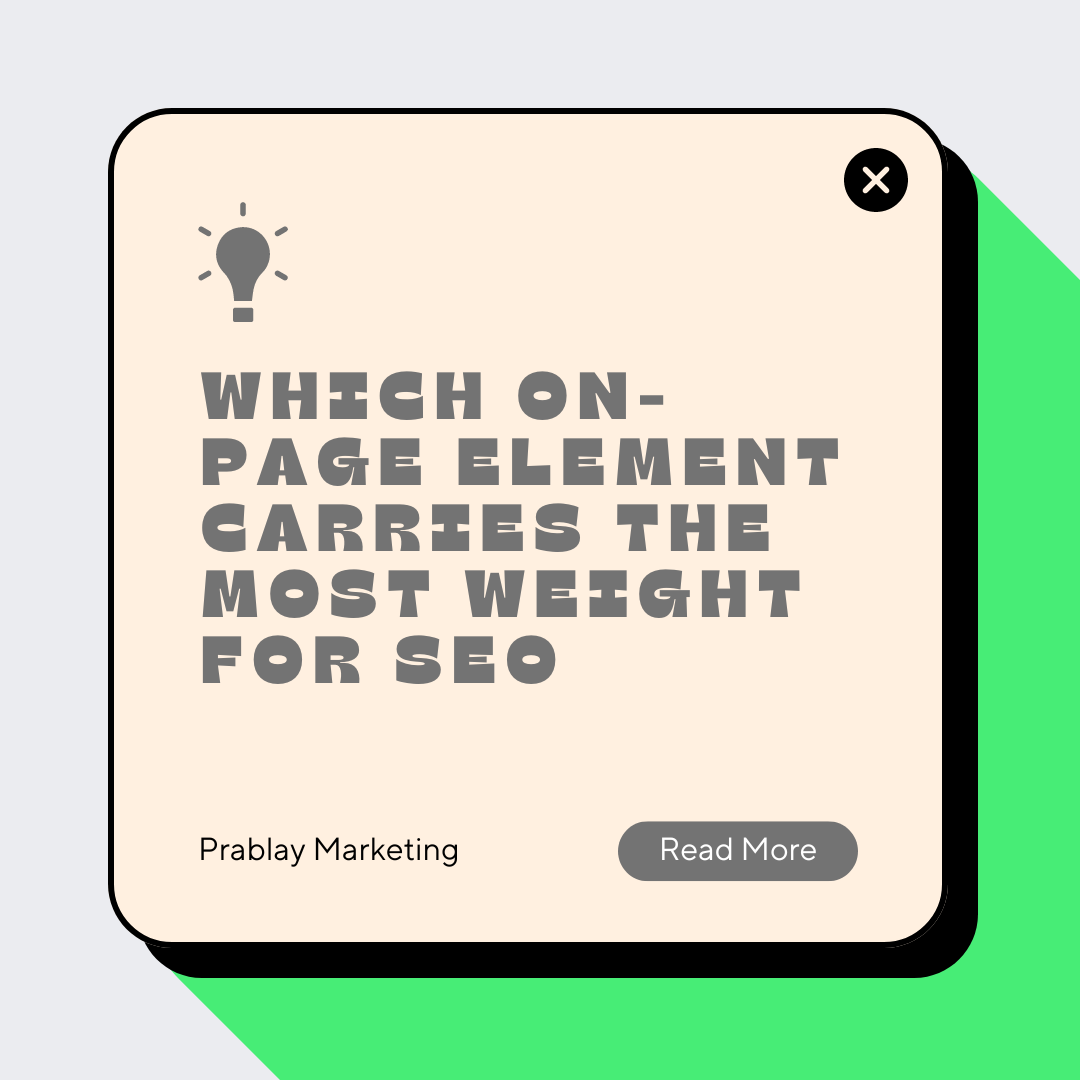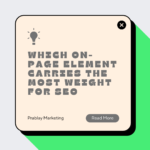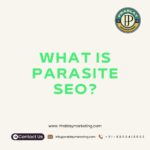In the world of SEO, there is one key on-page element that holds immense weight in driving organic traffic and boosting website rankings. It’s the powerhouse of SEO and mastering it can significantly impact your digital presence. So, what is this mighty element that we need to unveil?
In this article, we will unravel the secret to optimizing this key on-page element to its full potential. We’ll dive into its importance, best practices, and how it impacts your website’s visibility and user experience.
Whether you’re a seasoned SEO expert or new to the game, understanding and harnessing the power of this element can help skyrocket your search rankings. It’s the key to unlocking higher organic traffic, improving conversions, and dominating search engine results.
Join us as we take a deep dive into this vital on-page element that holds the key to SEO success. Get ready to supercharge your website’s performance and leave your competitors trailing in your wake. Let’s unlock the true potential of this SEO powerhouse together.
Understanding the importance of on-page elements in SEO
Search Engine Optimization (SEO) is a complex and ever-evolving field, with numerous factors influencing a website’s visibility and ranking in search engine results. While off-page factors, such as backlinks and social signals, play a significant role, on-page elements are the foundation of effective SEO. These on-page elements are the building blocks that search engines use to understand and evaluate the content and structure of your website.
On-page elements are the various components of a web page that can be directly controlled and optimized by the website owner or content creator. They include elements like title tags, meta descriptions, heading tags, and URL structure. These elements provide valuable information to search engines, helping them better comprehend the context and relevance of your website’s content.
By meticulously optimizing these on-page elements, you can significantly improve your website’s search engine visibility and drive more targeted organic traffic. Search engines prioritize websites that demonstrate a clear understanding of their users’ search intent and provide a seamless, informative, and engaging experience. Mastering the optimization of on-page elements is a crucial step in achieving long-term SEO success and outranking your competitors in the search results.
7 On-page Element Carries The Most Weight for SEO
1. Title tags
At the forefront of on-page optimization stands the mighty title tag. This HTML element is the primary way search engines understand the topic and focus of a web page. The title tag appears in the browser’s title bar, bookmarks, and search engine results pages (SERPs), making it a crucial element for both search engines and users.
The title tag is the first thing users see when they encounter your website in the search results, and it plays a pivotal role in determining whether they will click through to your page. A well-crafted, compelling title can entice users to visit your website, while a poorly written or irrelevant title can cause them to overlook your listing entirely.
Search engines place a significant emphasis on the title tag, as it provides a clear indication of the page’s content and relevance to the user’s search query. The title tag is one of the most heavily weighted on-page factors, and optimizing it can have a substantial impact on your website’s search engine rankings. By crafting an informative, keyword-rich, and user-friendly title tag, you can improve your chances of appearing in the top search results and attracting more qualified traffic to your site.
Optimizing title tags for SEO
Crafting an effective title tag requires a strategic approach that balances search engine optimization and user experience. Here are some best practices for optimizing your title tags:
- Incorporate Relevant Keywords: Include the primary keywords that describe the content of the page. This helps search engines understand the topic and relevance of your page, improving its chances of appearing in relevant searches.
- Keep it Concise: Aim for title tags that are between 50-60 characters in length. This ensures that the entire title is displayed in search engine results, providing a clear and concise message to users.
- Use a Unique Title for Each Page: Avoid duplicate or similar titles across your website, as this can confuse search engines and dilute the overall SEO value of your content.
- Front-load the Most Important Information: Place the most critical keywords and information at the beginning of the title tag, as search engines give more weight to the beginning of the title.
- Avoid Keyword Stuffing: While including relevant keywords is important, do not overload the title tag with too many keywords. This can come across as spammy and negatively impact your search engine rankings.
- Craft Compelling and Engaging Titles: Alongside optimizing for search engines, ensure that your title tags are captivating and enticing to users. Use power words, emotional triggers, and a clear value proposition to encourage click-throughs.
- Test and Iterate: Continuously monitor the performance of your title tags and be willing to experiment with different variations. A/B testing can help you identify the most effective title tag strategies for your specific website and target audience.
By following these best practices, you can create title tags that not only satisfy search engine algorithms but also resonate with your target audience, leading to higher click-through rates and improved search visibility.
2. Meta Descriptions
While title tags are the primary on-page element that users and search engines see in the search results, meta descriptions play a crucial supporting role in driving click-throughs and enhancing your website’s visibility.
Meta descriptions are the short snippets of text that appear beneath the title tag in search engine results. These concise summaries provide users with a preview of the page’s content, helping them determine whether the information is relevant to their search query.
Although meta descriptions do not directly influence search engine rankings, they can have a significant impact on the click-through rate (CTR) of your search listings. A well-crafted, compelling meta description can entice users to click through to your website, leading to increased traffic and potential conversions.
Best practices for writing compelling meta-descriptions
Crafting effective meta-descriptions requires a delicate balance of optimization and user-centric content. Here are some best practices to follow:
- Include Relevant Keywords: Incorporate the primary keywords that align with the page’s content, but avoid keyword stuffing. This helps search engines understand the relevance of your page and increases the chances of your listing appearing in relevant searches.
- Keep it Concise: Meta descriptions should be between 150-160 characters in length. This ensures that the entire description is displayed in search engine results, providing users with a clear and succinct overview of your page’s content.
- Focus on Uniqueness: Avoid duplicate or similar meta descriptions across your website. Each page should have a unique and tailored meta description that accurately reflects its content.
- Craft Compelling Copy: Use persuasive and engaging language to entice users to click through to your website. Incorporate action-oriented verbs, benefits, and a clear call-to-action to encourage user engagement.
- Align with Page Content: Ensure that the meta description accurately reflects the content and purpose of the page. Avoid making false promises or including information that is not present on the page, as this can lead to a poor user experience and higher bounce rates.
- Test and Refine: Continuously monitor the performance of your meta descriptions and be willing to experiment with different variations. A/B testing can help you identify the most effective strategies for your specific website and target audience.
By following these best practices, you can create meta descriptions that not only enhance the visibility of your website in search engine results but also increase the likelihood of users clicking through to your content, ultimately driving more qualified traffic and potential conversions.
3. Heading tags
In addition to title tags and meta descriptions, heading tags (H1, H2, H3, etc.) play a crucial role in on-page SEO optimization. These HTML elements create a hierarchical structure for your web page’s content, providing search engines with a clear understanding of the page’s organization and the relative importance of different sections.
Heading tags serve as the foundation for the page’s content, guiding users and search engines through the information presented on the page. They help break up content into easily digestible sections, making it more scannable and user-friendly.
From an SEO perspective, heading tags are important because they signal to search engines the key topics and subtopics covered on the page. By incorporating relevant keywords into your heading tags, you can improve the page’s relevance and increase the chances of it appearing in search engine results for those targeted queries.
Incorporating keywords in heading tags for better SEO
To optimize your heading tags for SEO, follow these best practices:
- Use Unique and Descriptive H1 Tags: The H1 tag is the most important heading on the page, as it represents the primary topic or focus of the content. Ensure that your H1 tag is unique, concise, and accurately reflects the page’s main subject matter.
- Incorporate Primary Keywords in H1 Tags: Include your primary target keywords in the H1 tag to signal to search engines the main focus of the page. This helps improve the page’s relevance and visibility for those specific search queries.
- Utilize H2, H3, and Beyond for Subtopics: Use the subsequent heading tags (H2, H3, etc.) to organize your content into logical sections and subsections. Incorporate relevant keywords into these subheadings to further enhance the page’s topical relevance.
- Maintain Logical Hierarchy: Ensure that your heading tags follow a clear and logical hierarchy, with H1 representing the main topic, H2 covering subtopics, and H3 (and beyond) delving into more specific details. This structure helps search engines better understand the page’s content and organization.
- Avoid Keyword Stuffing: While incorporating keywords is important, do not overload your heading tags with too many keywords. This can come across as spammy and negatively impact your search engine rankings.
- Write for Humans, Not Just Search Engines: While optimizing for search engines is crucial, remember that your heading tags should also be user-friendly and engaging. Craft headings that are informative, compelling, and easy to understand for your target audience.
By optimizing your heading tags in this manner, you can improve the overall structure and readability of your web pages, making it easier for search engines to understand and index your content. This, in turn, can lead to higher search engine rankings, increased organic traffic, and a better user experience for your website visitors.
4. URL structure
While often overlooked, the structure of your website’s URLs can have a significant impact on your on-page SEO performance. The URL is another critical element that search engines use to understand the content and context of your web pages.
A well-structured and optimized URL can provide valuable information to both search engines and users, improving the overall visibility and user experience of your website. By incorporating relevant keywords into your URL structure, you can enhance the relevance of your pages and increase the chances of appearing in search engine results for those targeted queries.
Moreover, a clean and user-friendly URL structure can also improve the credibility and trustworthiness of your website in the eyes of both search engines and users. A URL that clearly reflects the page’s content and hierarchy can instill confidence and encourage users to engage with your website.
5. Keyword Density
Keyword density plays a crucial role in on-page SEO as it helps search engines understand the content’s focus and relevance to a particular query. Here’s why it’s important:
- Relevance to Search Queries: Proper keyword density ensures that search engines recognize the main topics and themes of your content. This relevance is key for ranking in search results for specific queries.
- Avoiding Keyword Stuffing: While keywords are important, overusing them can lead to keyword stuffing, which is penalized by search engines. Maintaining an optimal keyword density (usually between 1-2% for most search engines) helps avoid penalties while still signaling relevance.
- Improved User Experience: Overloading a page with keywords can make the content feel forced and unnatural, which can deter readers. Balanced keyword density ensures that the content remains engaging and readable, enhancing user experience.
- Supporting Semantic SEO: Search engines increasingly focus on the overall meaning of content rather than individual keywords. Proper keyword density supports a semantically rich content structure, which can improve search visibility.
6. Image Optimization
Image optimization is a vital aspect of on-page SEO for several reasons:
- Faster Page Load Times: Optimized images load faster, which improves the overall load time of your webpage. Since page speed is a ranking factor for search engines, faster pages are more likely to rank higher.
- Enhanced User Experience: Slow-loading images can frustrate users, leading to higher bounce rates. Optimized images contribute to a smoother user experience, keeping visitors engaged.
- Improved Accessibility: Alt text (alternative text) for images helps visually impaired users understand the content through screen readers. Additionally, alt text provides search engines with more context about the image content, which can improve SEO.
- Better Search Engine Indexing: Properly named image files and alt texts can help search engines better index your images, increasing the chances of them appearing in image search results, which can drive additional traffic.
- Reduced Bandwidth Usage: Smaller image file sizes reduce the amount of data transferred when a page loads, which is particularly important for mobile users with limited data plans. This can improve the site’s overall performance on mobile devices.
7. Internal Links
Internal linking is a key on-page SEO element for several reasons:
- Improved Navigation: Internal links help users easily navigate your site by connecting related content. This enhances the user experience, keeping visitors on your site longer and reducing bounce rates.
- Better Crawlability: Search engines use links to crawl websites. Internal links help search engine bots discover and index more pages on your site, improving the overall visibility of your content in search results.
- Distribution of Link Equity: Internal links can pass “link juice” or authority from one page to another. This helps distribute ranking power across your site, allowing less popular pages to benefit from the authority of more popular ones.
- Enhanced Content Hierarchy: Internal linking helps establish a clear hierarchy of content on your website. By linking to important pages more frequently, you signal to search engines that these pages are significant, which can help them rank better.
- Encouraging User Engagement: By linking to related articles or products, you encourage users to explore more of your content, increasing the chances of conversions and improving your site’s overall performance metrics.
Conclusion: Maximizing the power of on-page elements for SEO success
In the ever-evolving world of SEO, on-page elements remain the foundation for driving sustainable organic growth and dominating search engine results. By mastering the optimization of these crucial components, you can unlock the true potential of your website and outshine your competitors in the digital landscape.
From the mighty title tag to the often-overlooked URL structure, each on-page element plays a vital role in shaping your website’s search engine visibility and user experience. By following the best practices outlined in this article, you can craft a comprehensive on-page optimization strategy that will propel your website to new heights of success.
Remember, the key to unlocking the power of on-page SEO lies in striking the perfect balance between search engine optimization and user-centric design. By creating content and structures that both search engines and your target audience can appreciate, you’ll be well on your way to dominating the search results and driving a steady stream of qualified traffic to your website.
So, embrace the strategies and techniques discussed in this article, and let the true power of on-page SEO transform your digital presence. With a relentless focus on optimizing these critical elements, you’ll be well on your way to achieving your SEO goals and cementing your position as an industry leader in your niche.




